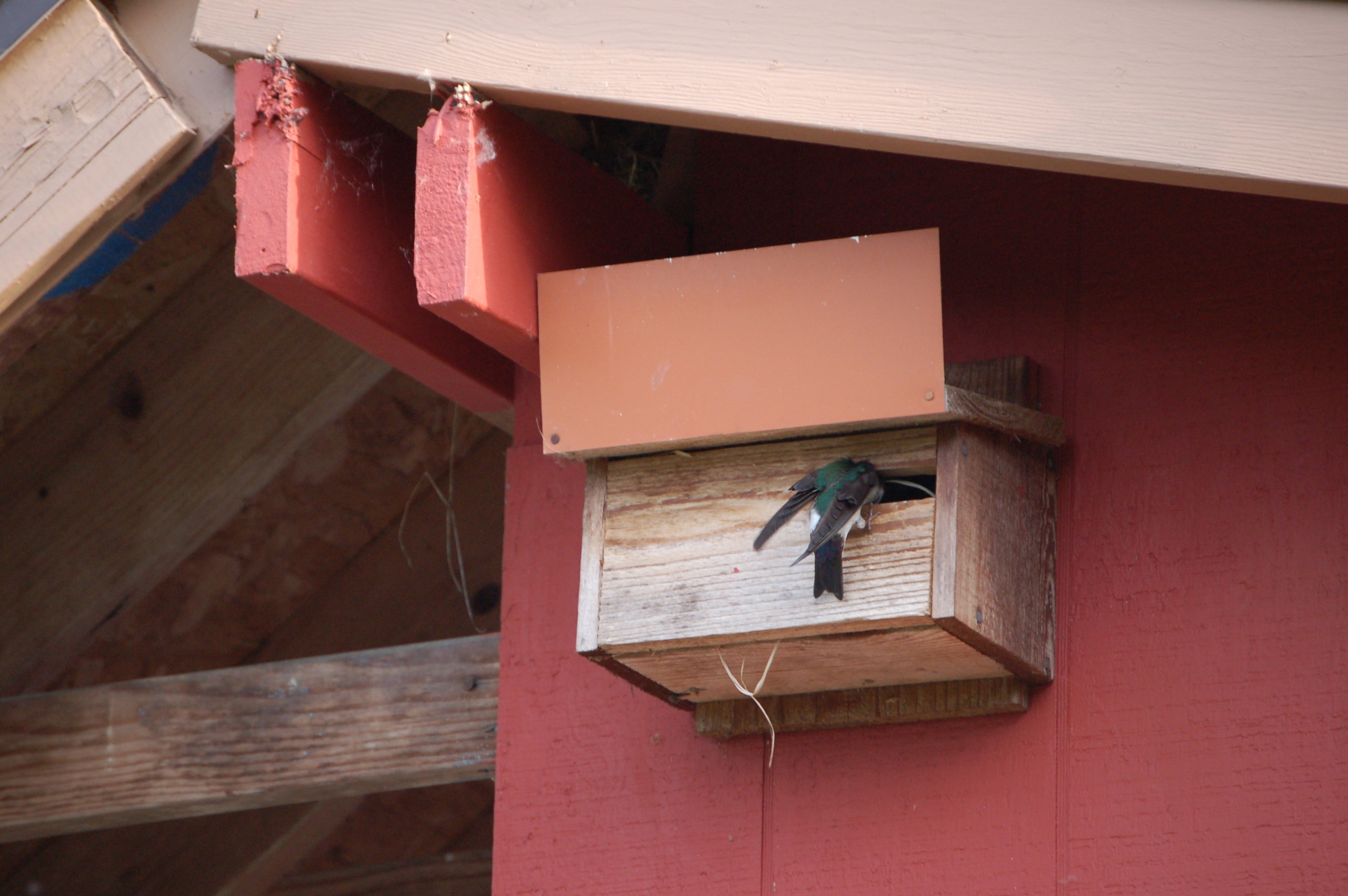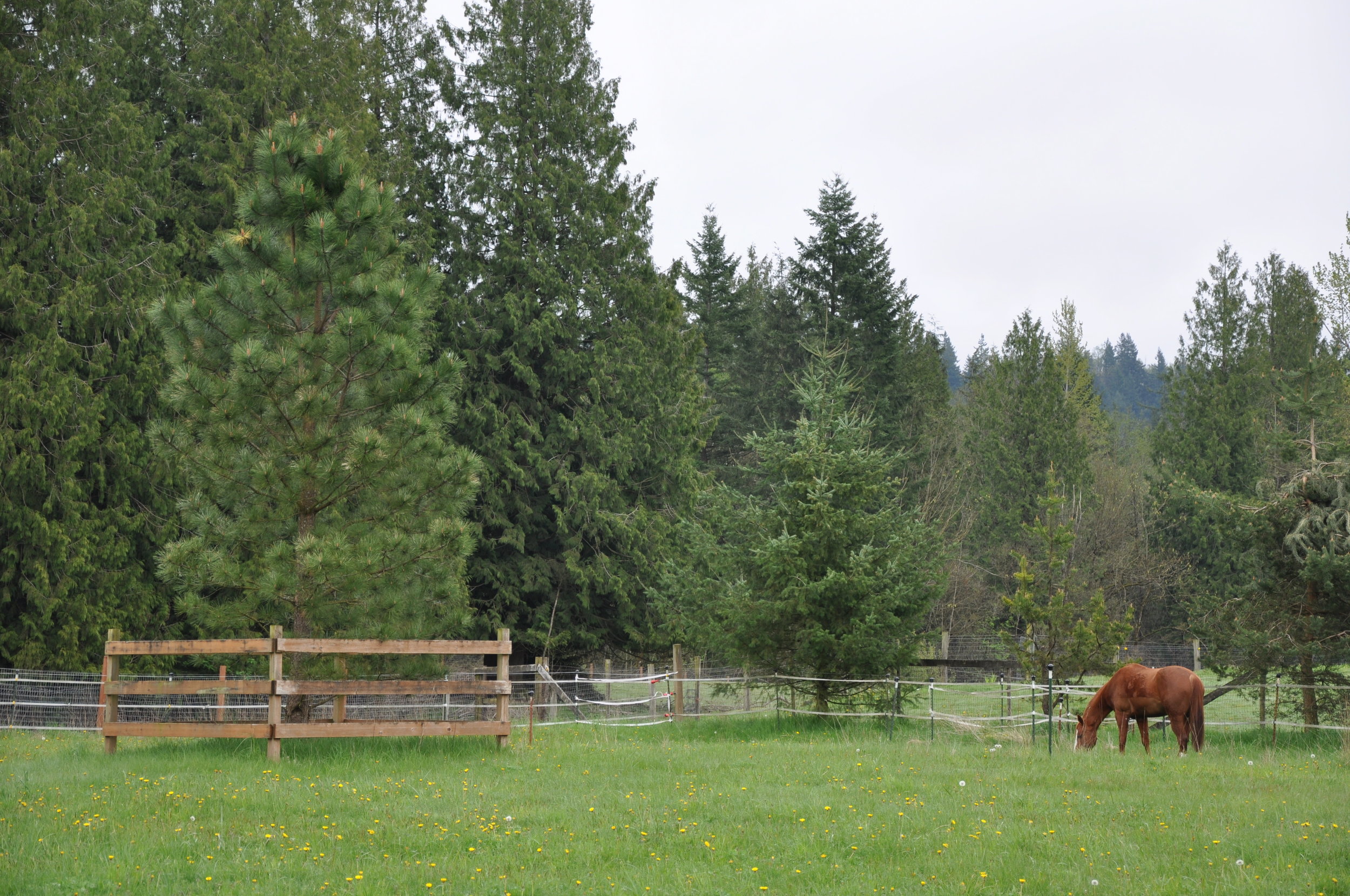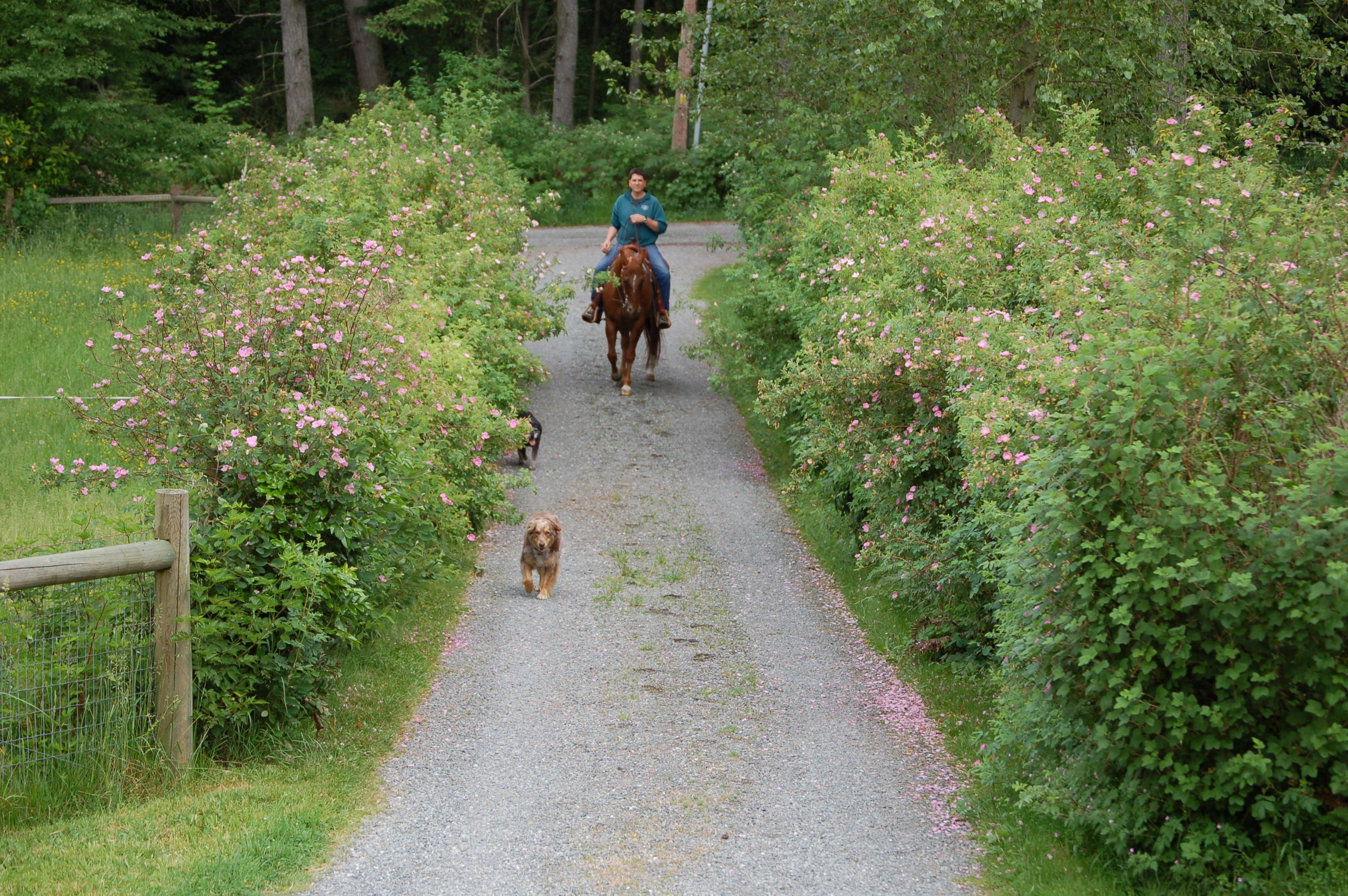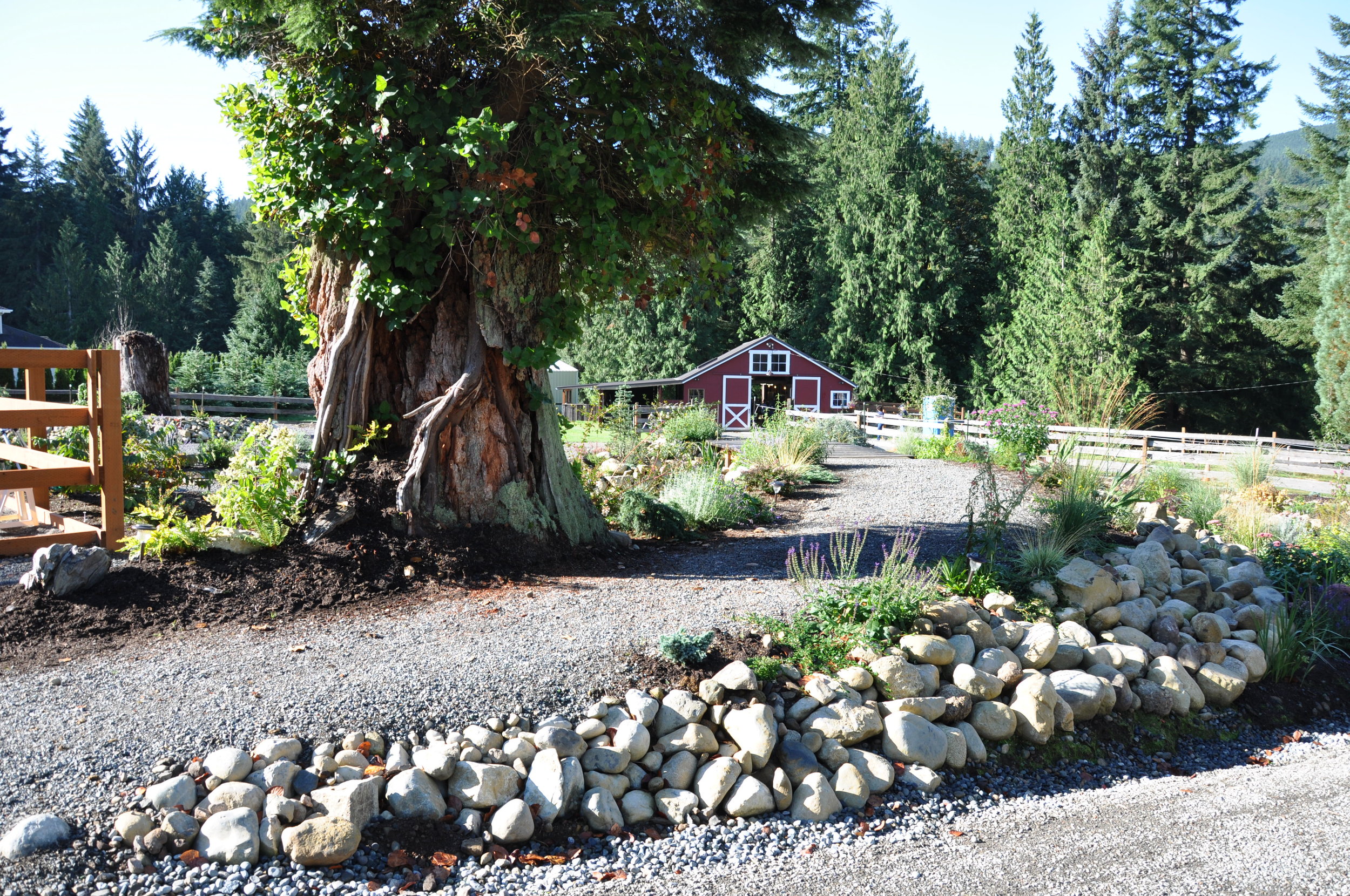Go Native with Hedgerows and Buffers on Horse Properties
/Many horse owners don’t realize how helpful native trees and shrubs can be on a horse property. People, wildlife (including our valuable native pollinator insects), horses, and the environment can all benefit from a landscape of native plants.
Native plants are those that have evolved over thousands of years in their specific regions. These hardy plants have adapted to the geography, hydrology, and climate and have co-evolved with animals, insects, fungi, and microbes. This is important to note as it means we won’t spend money and time helping them along with pesticides or fertilizers which further reduce our environmental impacts. Native plants are the foundation of our natural ecosystems. As a result, a community of native plants provides habitat for a variety of native wildlife species such as songbirds, pollinating insects, and butterflies.
Even though the Pacific Northwest is quite lush, logging, farming, ranching, and development have caused a tremendous loss of native vegetation and critical wildlife habitat. Enhancing horse properties with native plants wherever possible not only promotes native wildlife, it also helps control erosion, provides a visual buffer, and helps filter chemicals and nutrients. A tall hedgerow can also act as dust screen and wind barrier. A simple hedgerow of natives may attract beautiful songbirds, butterflies, frogs, and other interesting wildlife for viewing – and just outside your home or barn door!
Cedars, cottonwood, willows, and dogwoods can soak up water in a wet area. Violet green swallows (which live in tree cavities) can provide bug patrol -- eating several thousand flies, moths, mosquitoes, and other bugs each day -- more than any bug-zapper! Bats (which also live in tree cavities) will conduct nightly bug raids, dispensing of thousands more bugs. Native roses in a hedgerow along your driveway can welcome visitors with their sweet smell.
We don’t have to look hard to see that exposure to pesticides are being linked daily to frightening diseases such as nerve damage in adults and cancer in children. Chemicals used outdoors often end up in our surface waters where they can harm fish and other aquatic wildlife, or become a human health issue. The bottom line is simple: anyway we can reduce chemical use in our lives and around our horses, pets, and families is a good thing for everyone and everything.
After the first few years of a little extra watering, native plants are ready to go “on their own”, requiring only a minimal amount of care and no special watering. This is an important water conservation technique – and a time and money savings (assuming you pay for your water) for you! Natives, especially bare root and whips, cost less to buy than non-native landscaping plants and are equally attractive -- another cost-savings in landscaping your yard and property.
All this just might increase your property value, too. The U.S. Fish & Wildlife Service Office of Migratory Bird Management reports that homes in neighborhoods with large trees for birds are worth more than similar homes in neighborhoods without trees. Not only do large trees provide habitat and a source of bugs for birds, but they also cool the temperature making neighborhoods more livable for human populations and providing shady retreats for your horses to hang out around on hot summer afternoons.
Some of the ways you can use hedgerows and buffers on horse properties include:
1. Plant a hedgerow of native plants as a visual screen between neighboring uses. Hedgerows can also act as wind barriers for a breezy area or a dust screen around your arena.
- Species to consider for hedgerows: beaked hazelnut, nootka rose, red flowering currant as well as coniferous and deciduous trees such as Douglas fir, western red cedar, black hawthorn and pacific crabapple
2. Plant native plants as mud managers alongside confinement areas to reduce flows, absorb water and filter sediments and pollutants.
- Species to consider for wet areas: red osier dogwood, pacific willow, black twinberry, salmonberry and pacific ninebark
3. Plant native buffers along streams and wetlands to protect riparian habitat by improving water quality and reducing erosion.
- Species to consider for riparian areas: western red cedar, Oregon ash, black twinberry, pacific ninebark, salmonberry
4. Plant native plants as decorative landscape features near your house and in a hedgerow along the driveway. Many native shrubs and groundcovers exhibit beautiful arrays of colors in flowers and leaves. Choose a variety of evergreen and deciduous plants for year round coverage.
- Species to consider for ornamental value: red flowering currant, mock orange, salal, sword fern, kinnikinnick
5. Plant native plants instead of lawns to save time and money by reducing or even eliminating the need for fertilizers, pesticides, water and lawn maintenance equipment.
- Species to consider for drier areas: Douglas fir, shore pine, nootka rose, big leaf maple, beaked hazelnut, thimbleberry, snowberry, Oregon grape
6. Plant native plants for wildlife enhancement. The types of plants you choose for food and cover will help determine the wildlife species attracted to your backyard.
- Planting a variety of native species will ensure that plants will flower and fruit at different times throughout the year
Before you purchase your trees and shrubs, make sure to check whether or not they are poisonous to horses and other livestock. Ask your veterinarian or check out the ASPCA list here. (https://www.aspca.org/pet-care/animal-poison-control/horse-plant-list). Plants listed above are generally not thought of as toxic to horses, but it is not recommended that any of these plants be used as a diet for horses, nor should horses be allowed to consistently graze them.
Your local conservation district can help select native plants for specific issues or problems on your horse property -- and with ideas for designing a hedgerow or buffer.
Article written by: Alayne Blickle, Horses for Clean Water
Support for this publication was provided by Snohomish County Surface Water Management and the Puget Sound Stewardship and Mitigation Fund, a grant-making fund created by the Puget Soundkeeper Alliance and administered by the Rose Foundation for Communities and the Environment.







